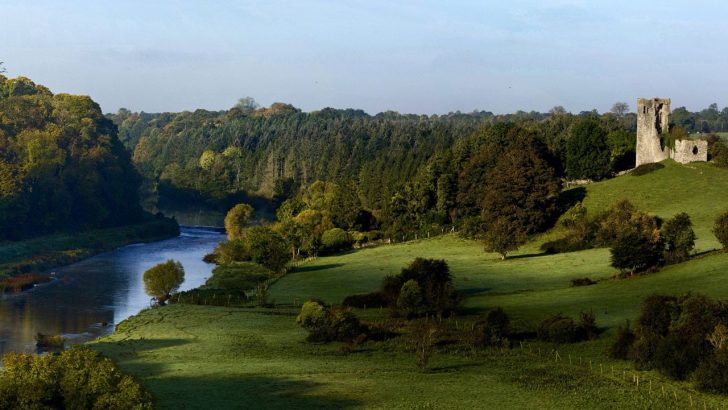Discovering the Boyne Valley
by Noel French (Mercier Press., €14.99)
Christopher Moriarty
A small river, in quite a small country, yet a portion of the Boyne Valley contains an amazing wealth of solid remnants which incorporate a huge spectrum of human civilisation.
A day trip can include them all and a good guidebook can outline the essentials within 200 pages. Thirty years as director of the Meath Heritage Centre and years as a tour guide have provided Noel French with the necessary knowledge – and his abilities as a writer have combined with this to produce a remarkable and very readable work. The author is also a talented photographer, and beautifully illustrates the text with his pictures.
The publishers have, perhaps, been a little niggardly in omitting such helpful items as a table of contents and a list of illustrations so that it takes the reader a little while to discover the structure of the book.
Disappointingly for a description of a valley, it follows an alphabetical sequence of the principle monuments rather than the direction of the river. The faint puzzle of why the Battle of The Boyne is the first chapter is solved by ignoring the ‘the’ and noting that ‘Battle’ comes before ‘Bective’. In the light of the quality of the writing this may be trivial – but it does nothing to help the reader in search of a guide to the features of the valley.
That said, the substance of the book is excellent, each of the chapters providing an erudite summary of the historical or archaeological facts of the subject, together with the relevant folklore, myth and legend and instructions on the opening hours and admission needs for each of them. Some, such as the interior of Trim Castle, are guide-accompanied only, while others, Tara above all, are accessible free of charge day and night throughout the year.
To return to the spectrum: Newgrange and Knowth aren’t just some of the oldest buildings in the world, but the technology was so well advanced that their roofs have never leaked. Together with the Hill of Tara they contain material objects and traces of construction work showing ceaseless veneration over five or six thousand years until the arrival of Christianity.
The Christians introduced the widespread use of writing, and a slow development of the replacement of oral tradition by historical record. For centuries the followers of St Patrick applied their skills mainly to liturgy and scriptures, rather than current affairs and biography so that the details of the lives of the saints are largely conjectural.
Nevertheless they produced manuscripts of beauty, treasured in various libraries of Ireland and farther afield. And they created sculpture in the form of the high crosses which abound in the valley and the round towers which testify to truly remarkable engineering skills.
The dramatic changes introduced both by the reforming prelates such as St Malachy and the invading Normans began a millennium of increasingly sophisticated building and town-planning.
They are well represented in the valley and engagingly described in the book. Beginning with Trim Castle and Mellifont Abbey, they lead on to 18th-Century mansions at Slane and elsewhere, followed by 19th-Century churches. Spanning the 5,000 years from wealthy farmer to space traveller, the Boyne Valley is a microcosm of the history of humankind.


 Boyne Valley
Boyne Valley 